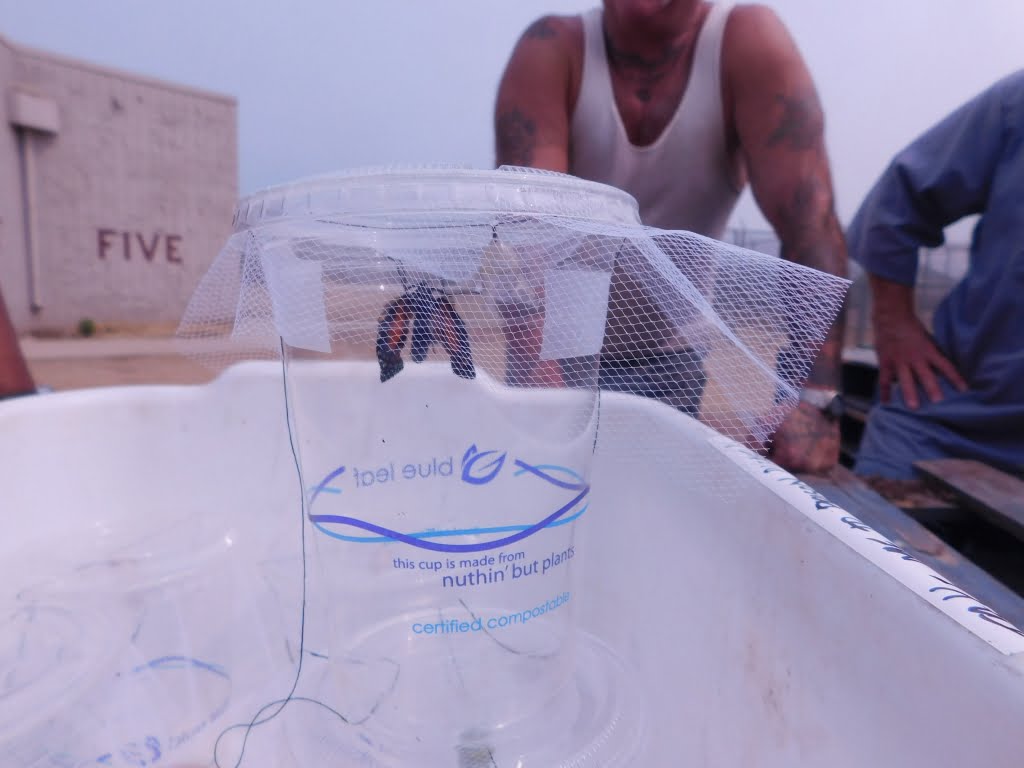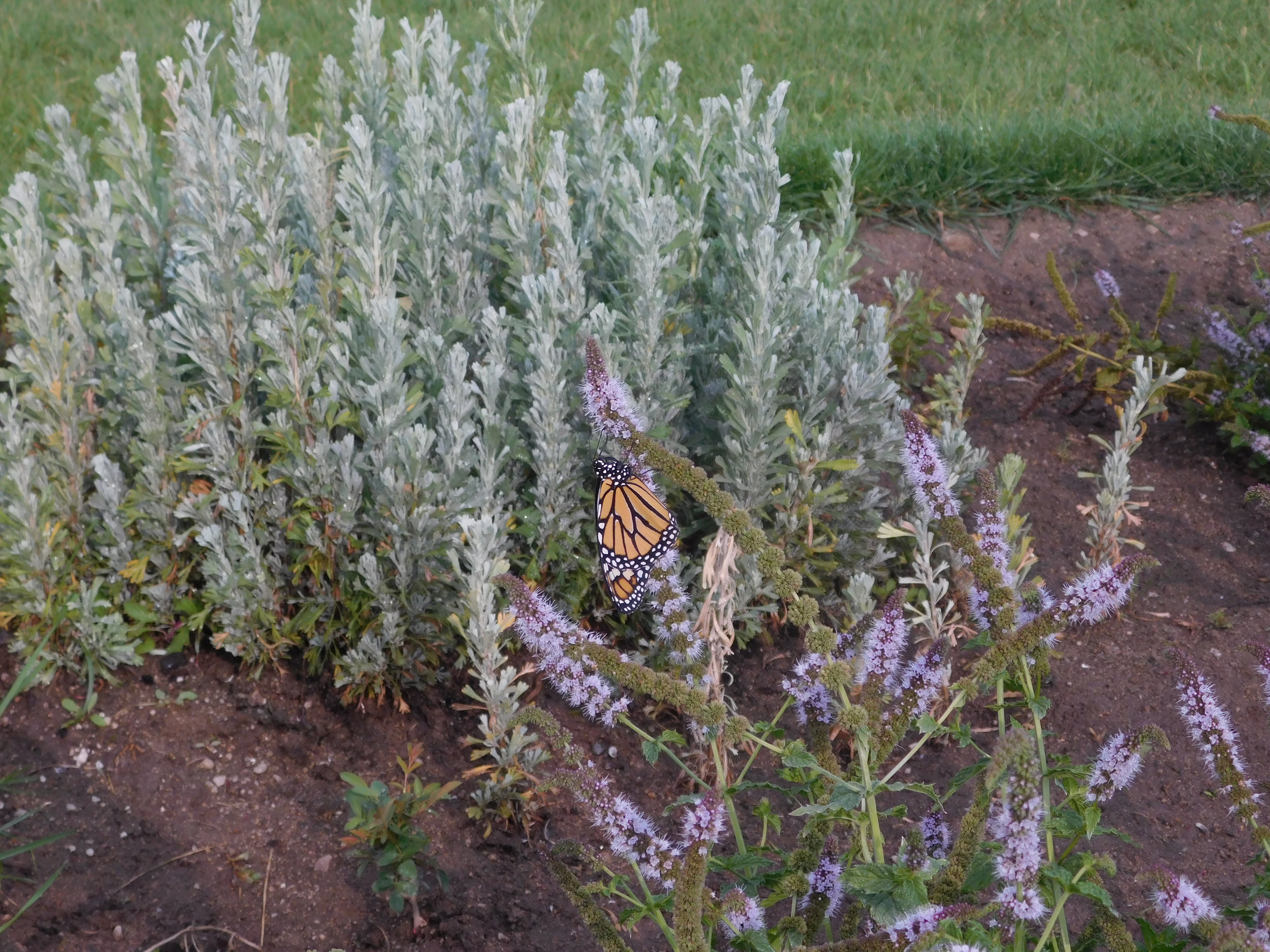
Growing Milkweed and Releasing Monarchs at Northern Nevada Correctional Center
December 2020
For four years, Adults in Custody at Northern Nevada Correctional Center in Carson City, have raised sagebrush (Artemesia tridentata) plugs for use in revegetation projects in western states. Sagebrush provides crucial habitat for the Greater sage-grouse (Centrocercus urophasianus), but years of fire has devastated sagebrush throughout the west and contributed to a decline in sage-grouse populations. Attempting to restore sagebrush by reseeding in drought conditions has yielded only limited success. The Sagebrush in Prisons Project has adults in custody raising sagebrush in a nursery for transplanting as plugs into sage-grouse habitat. While this is more labor intensive than seeding, it has a much higher success rate and offers educational opportunities for incarcerated adults. The program is coordinated by the Institute for Applied Ecology (IAE), a non-profit based in Corvallis, Oregon, partnering with the Department of Corrections and the Bureau of Land Management.
As part of a research project at the University of Nevada, Reno, this year the Unit 5 crew also grew some milkweed (genus Asclepias). Having no experience doing this, the adults in custody had to devise their own techniques for everything from sowing seeds to transplanting the seedlings. In fact, they were so successful that the two trays of plants we had planned for turned into five full trays.
Monarch butterflies (Danaus plexippus) have a symbiotic relationship with Asclepias spp., commonly known as milkweed. The butterflies pollinate the plants’ flowers and lay their eggs on backside of the leaves. Once the eggs hatch, the caterpillars feed on the leaves and stems which provide their sole nourishment. Herbicides and expanding urban areas have led to loss of milkweed populations. As the milkweed disappears, so do the monarch butterflies.
The prison plants, already in bloom, were then transferred to the care of Aramee Diethelm, a PhD candidate at the University of Nevada Reno, who is researching chemically-mediated communication between monarchs and milkweed.
“Butterflies (Lepidoptera species) use many chemical cues to select their host plants. In plants within the Asclepias genus, the primary chemical signals for monarch butterflies are cardenolide and flavonol glycosides. Gravid females can detect oviposition stimulants within plants by tapping the leaf surface with olfactory organs on their feet and antennae. We do not currently understand how changes to plant chemistry as a result of water-availability will influence monarch host-plant selection. Understanding oviposition preferences are crucial to predicting monarch population responses to changing climatic conditions, particularly in the arid Western United States where water availability is decreasing.
As early-stage monarch larvae are limited in mobility, maternal host-plant selection has a direct effect on offspring performance. In this experiment, oviposition preference will be determined by the number of eggs deposited per narrowleaf milkweed from either control or water-limited treatments. The results from this study will shed light on the ecological impacts of climate change and inform future conservation measures for an insect species that is rapidly declining.”
Seeing pictures of the plants being used in the study brought a huge sense of accomplishment to inmate participants from the prison. An adult in custody spoke highly of the project: “Our work benefitting someone else’s project made us feel like we were part of the project. To top off this season, we have been given some monarchs still in their chrysalises. On their arrival here, two had already emerged from their chrysalises. We released them in some milkweed we have planted in a little garden area. As I write this in summer, the others reside in our cells at night, waiting to emerge. We hope to release them soon.”
Everyone in the Unit 5 crew is excited about finishing up the season. This partnership has been beneficial for all parties involved and in addition to growing all those sagebrush plugs for the Bureau of Land Management, the Sagebrush in Prisons Project will continue to grow Asclepias fascicularis and expand to also growing Asclepias speciosa next year for this University of Nevada-Reno research project.
Thank you to our IAE contractors for all the help and support and for believing in the project.
Tags:
Restoration
Research
Education
Get Involved
Contact
Main Office:
4950 SW Hout Street
Corvallis, OR 97333-9598
541-753-3099
info@appliedeco.org
Southwest Office:
1202 Parkway Dr. Suite B
Santa Fe, NM 87507
(505) 490-4910
swprogram@appliedeco.org
© 2025 Institute for Applied Ecology | Privacy Policy




